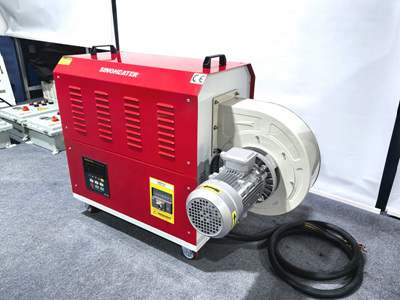After the hot air blower is used in a high-altitude environment, its performance evaluation should focus on the influence of environmental factors such as air density, air pressure and humidity on the equipment. The specific evaluation contents are as follows:
First, the influence of air density on performance
In high-altitude areas, the air density is relatively low, which can lead to a decrease in the air volume of the hot air blower and a reduction in negative pressure. Due to the reduction in air density, the mass of air conveyed by the hot air blower at the same rotational speed decreases, directly affecting the heating efficiency and wind output. To address this issue, a hot air blower with a rated plateau altitude model can be selected, or the air volume and negative pressure can be increased by improving the blade layout, densifying the fan blades, and enhancing the air duct design.
Second, the influence of air pressure on performance
In high-altitude areas, the air pressure is relatively low, which may lead to a decline in the sealing performance and insulation strength of the hot air blower. Under low-pressure conditions, the sealing effect of the gasket will be affected, and air and liquid leakage may occur. At the same time, the external insulation of the equipment will also decrease, affecting the electrical conductivity. Therefore, it is necessary to check the sealing performance and insulation strength of the hot air blower to ensure that the equipment can still operate normally in a low-pressure environment.
Third, the influence of humidity on performance
In high-altitude areas, the humidity is relatively high, which may cause rust and corrosion of the components of the hot air blower, affecting the service life and performance of the equipment. Excessive humidity can also increase the resistance of electrical energy transmission, reduce the efficiency of electrical energy production, and may even cause short circuits in electrical components. Therefore, it is necessary to check whether the steel components such as the rotating blades and the tower of the hot air blower are rusty, as well as whether the electrical components are damp and short-circuited.
Fourth, performance evaluation methods
Flow and pressure testing: Convert parameters such as flow and pressure under usage conditions to standard atmospheric conditions and compare them with the rated parameters of the equipment to assess the degree of performance degradation.
Sealing and insulation performance testing: Through air tightness tests and insulation resistance tests, the sealing effect of the gasket and the insulation strength of the equipment are inspected.
Component corrosion inspection: Visually inspect the rust condition on the surface of steel components, and conduct non-destructive testing if necessary.
Operational efficiency assessment: Measure the input power and output heat, calculate the thermal efficiency and compare it with the standard value.




